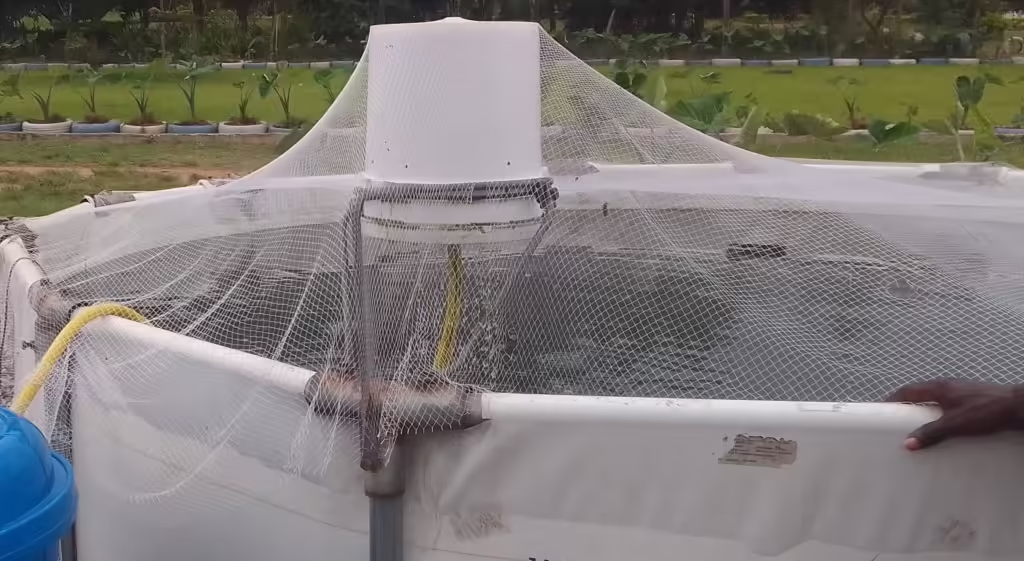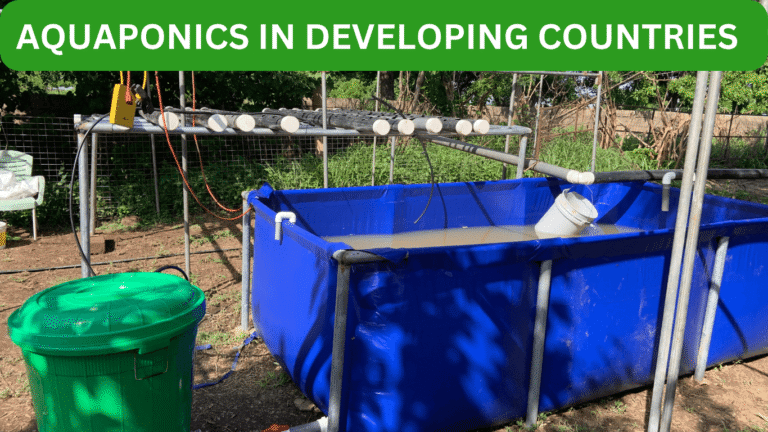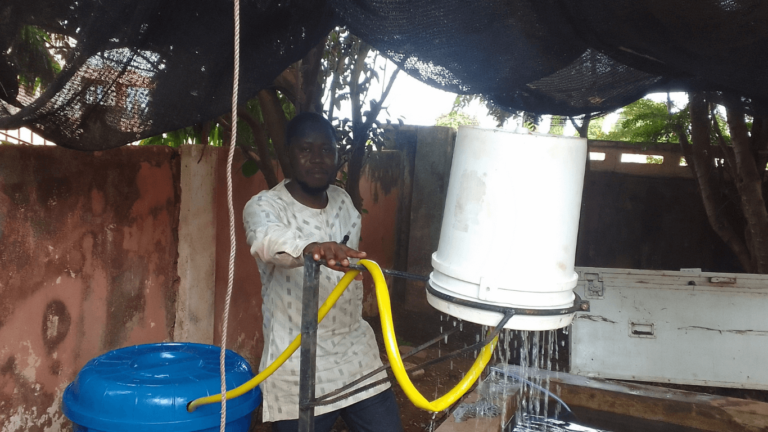15 Common Causes of Fish Mortality in Aquaculture must be known to every fish farmer to be able to manage a successful fish farm.
With proper care and management, many causes of fish deaths can be avoided, but it’s essential to understand what factors contribute to these losses.
In this article, we’ll discuss 15 Common Causes of Fish Mortality in Aquaculture and provide practical advice to help you minimize losses and protect your fish.
1. Poor Water Quality
Water quality is vital for the health and survival of fish. Changes in water chemistry—such as high ammonia or nitrite levels, unbalanced pH levels, and low dissolved oxygen—can stress fish or poison them.
2. Low Dissolved Oxygen Levels
Fish require sufficient dissolved oxygen to survive. Oxygen levels can drop due to overcrowding, inadequate aeration, or the presence of decaying organic matter in the water.
To avoid fish suffocation, ensure proper aeration, monitor oxygen levels, and avoid overstocking your pond.
3. Overfeeding and Nutritional Imbalance
Feeding practices significantly affect your fish health. Overfeeding leads to decaying food, which deteriorates water quality and increases ammonia levels. At the same time, feeding fish improper diets or the wrong feed size can cause malnutrition and weakened immune systems.
Feeding the correct amount and type of feed based on fish size and age is essential for avoiding both overfeeding and nutritional deficiencies.
4. Disease Outbreaks
Fish are susceptible to a variety of diseases caused by bacteria, viruses, fungi, and parasites.
Poor water quality, overcrowding, or introducing new fish without quarantine can trigger disease outbreaks.
5. Extreme Weather Conditions
Fish are highly sensitive to temperature changes. Extreme heat, cold, or rapid fluctuations in temperature can stress fish or even cause death.
Heatwaves can reduce oxygen levels, while cold snaps may lower metabolism.
I once lost fish on my farm because of extreme heat. The water temperature in the pond change and the fish were stressful. I quickly changed them to another pond with enough water. The reason was I reduce the water level and when the sun came out, the tarpaulin pond became hot affecting the water as well.
6. Overcrowding
Overstocking your pond or tank leads to increased waste, reduced oxygen levels, and higher disease transmission. Overcrowded fish experience stress, and competition for resources increases.
7. Predation
Birds, snakes, and even larger fish can prey on your stock, leading to significant losses. Open ponds are especially vulnerable to birds like herons.
8. Toxic Substances
Fish can be poisoned by toxic substances, such as agricultural runoff, pesticides, or heavy metals.
Even minor exposure to these chemicals can be fatal. Farmers should avoid using harmful chemicals near ponds, ensure proper drainage, and regularly test water for contaminants. In closed systems, filtration can help remove toxins before they harm fish.
9. Algal Blooms
Algal blooms occur when excessive nutrients—like nitrogen and phosphorus—enter the water, often from overfeeding or waste buildup.
When algae die, they decompose, consuming oxygen and creating hypoxic conditions that can suffocate fish.
10. Handling Stress
Handling stress is common during harvesting, grading, or transport. Rough handling or overcrowded transport containers can injure fish, damage their gills, or weaken their immune systems.
11. Thermal Shock
Sudden changes in water temperature can cause thermal shock, disrupting the fish’s metabolic processes. This can occur during water changes, after heavy rainfall, or during abrupt weather shifts. To prevent thermal shock, ensure gradual water exchanges and monitor environmental conditions closely. Proper pond design can also help maintain stable temperatures.
12. Inadequate Nutrition
Providing fish with the correct nutritional balance is essential to their health. In addition to avoiding overfeeding, farmers must ensure fish receive high-quality, nutrient-rich feed that matches their growth stage. Spoiled or moldy feed can cause illness, while low-quality feed may lack essential nutrients, weakening fish and making them more susceptible to disease.
13. Inbreeding and Poor Genetic Stock
Fish with poor genetic diversity or weak stock may suffer from higher mortality rates.
Inbreeding reduces genetic vigor, making fish more prone to disease, slow growth, and environmental stress.
14. Mechanical Failures
Equipment like aerators, pumps, or filters is critical to maintaining optimal water quality.
A breakdown in any of this equipment can result in oxygen depletion or waste buildup, leading to fish deaths. Regular maintenance and having backup systems in place can prevent mechanical failures from causing sudden losses.
15. Poaching and Theft
Poaching or theft is an often-overlooked cause of fish loss. In some areas, fish farms can be targeted by thieves, leading to significant losses. Installing proper security measures, such as fencing, surveillance cameras, and even employing guards, can help protect your fish from theft. For smaller setups, simple deterrents like motion-sensitive lighting or alarms can also help.
Solutions to Common Causes of Fish Mortality
1. Poor Water Quality
- Regularly test water parameters such as pH, ammonia, nitrite, and nitrate levels.
- Use water treatments or filtration systems to maintain water chemistry balance.
- Perform partial water changes as needed to keep water clean and fresh.
2. Low Dissolved Oxygen Levels
- Install aerators or oxygen diffusers to keep oxygen levels high.
- Avoid overcrowding and remove excess organic matter from the pond.
- Regularly monitor oxygen levels, especially during hot weather or at night.
3. Overfeeding and Nutritional Imbalance
- Feed fish according to their size and stage of growth.
- Avoid overfeeding by removing uneaten food after feeding times.
- Provide nutritionally balanced and high-quality feed, adjusting for seasonal changes in metabolism.
You may watch this video on feeding and what to do when you overfeed your fish
4. Disease Outbreaks
- Quarantine new fish before introducing them to your main stock.
- Regularly inspect fish for signs of disease and act quickly to treat infections.
- Maintain good water quality and avoid overcrowding to reduce disease transmission.
5. Extreme Weather Conditions
- Use shading or floating covers to reduce heat stress.
- Increase aeration during heatwaves to boost oxygen levels.
- Monitor weather forecasts and take preventative measures during extreme conditions.
6. Overcrowding
- Calculate and maintain an appropriate stocking density based on your pond or tank size.
- Regularly grade fish by size to reduce competition and stress.
- Remove any excess fish if the pond is overstocked to avoid resource depletion.
7. Predation
- Install bird nets or predator fencing around ponds.
- Use decoys or noise deterrents to scare away birds and other predators.
- Separate fish by size to prevent predation within the stock.

8. Toxic Substances
- Ensure proper drainage to prevent agricultural runoff from contaminating ponds.
- Avoid using pesticides, herbicides, or chemicals near the water source.
- Regularly test the water for harmful substances and remove toxins using filtration.
9. Algal Blooms
- Reduce nutrient levels by controlling feed amounts and organic waste buildup.
- Introduce beneficial bacteria or algae-eating species to control algae growth.
- Aerate water increases oxygen and prevents hypoxic conditions during algal die-off.
10. Handling Stress
- Use gentle nets and handling techniques during harvesting or transport.
- Acclimate fish slowly to new environments or water conditions.
- Avoid overcrowding fish during transport, and ensure water quality is maintained.
11. Thermal Shock
- Gradually exchange water to avoid sudden temperature changes.
- Monitor pond temperatures and adjust water depth to stabilize conditions.
- Install pond covers to minimize exposure to extreme weather fluctuations.
12. Inadequate Nutrition
- Provide species-appropriate feed that meets the nutritional needs of your fish.
- Store feed in cool, dry places to avoid spoilage, and avoid using moldy or expired feed.
- Adjust feeding amounts based on the fish’s growth stage and activity levels.
13. Inbreeding and Poor Genetic Stock
- Source fish from reputable hatcheries with diverse and strong genetic lines.
- Avoid using inbred stock or fish with poor genetic diversity.
- Implement a breeding program that emphasizes genetic health and vigor.
14. Mechanical Failures
- Regularly maintain and inspect equipment like aerators, pumps, and filters.
- Have backup systems or spare parts available in case of equipment failure.
- Install alarms or monitoring systems to alert you when critical equipment fails.
15. Poaching and Theft
- Install secure fencing and gates around ponds to deter poachers.
- Use surveillance cameras or motion-sensitive alarms to monitor farm activity.
- Employ guards or work with local security teams in high-risk areas.
Conclusion
If you follow the above mentioned 15 Common Causes of Fish Mortality in Aquaculture and their solutions, you can run a successful fish farm.




